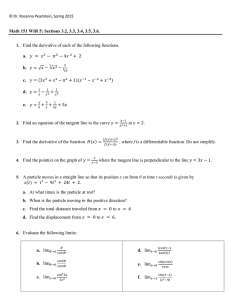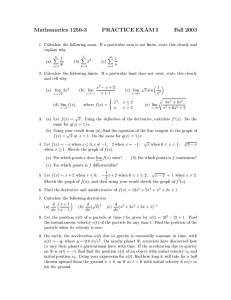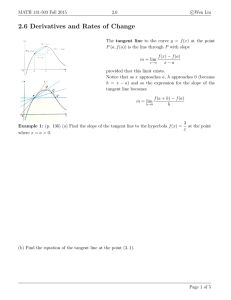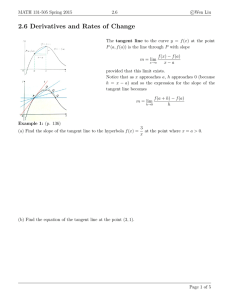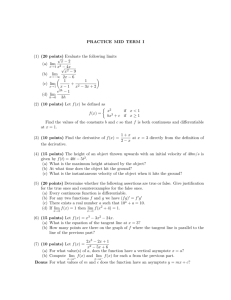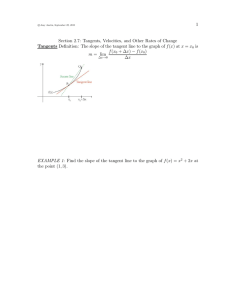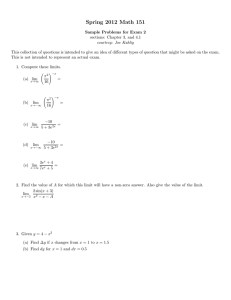4.1 Power Rule
advertisement
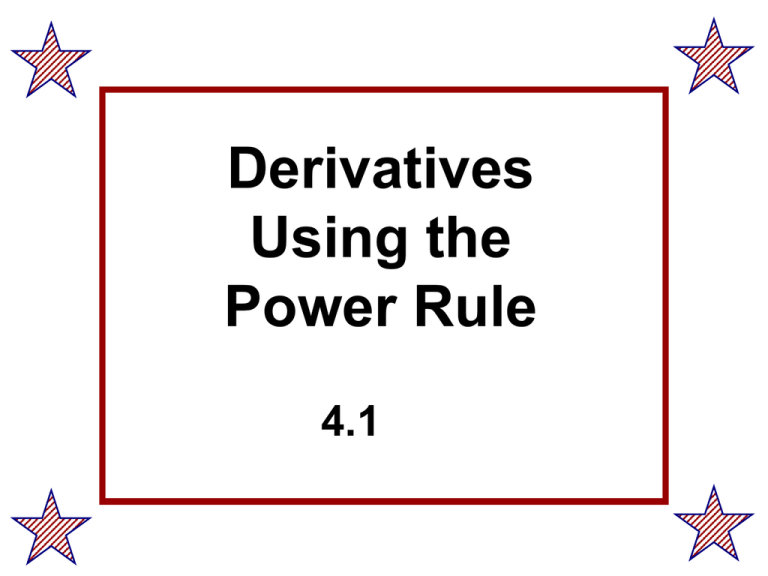
Derivatives Using the Power Rule 4.1 Find the derivative using the definition. f x h f x dy lim dx h0 h y x 2x 3 2 x h 2 2 x h 3 x 2 2 x 3 lim h 0 h x 2 2 xh h 2 2 x 2h 3 x 2 2 x 3 lim h 0 h 2 xh h 2 2h lim h 0 h h 2 x h 2 lim 2 x h 2 lim h 0 h 0 h 2x 2 Finally… the shortcut!!!!!!! Same problem… Find the derivative using the power rule. y x 2x 3 2 2 dy d y Find and . 2 dx dx y 3x 5x 7 x 4 3 2 Find the derivative using the power rule. 1 2 3 y 4 3 5 x 3 x 2x x P200 #3-17 odd Check your answers! Write the equation of the tangent at the given point. f ( x) x 5x 2 at P (1, 2) 3 How could you use your graphing calculator to answer this question more quickly? Determine the values of x for which the function has a horizontal tangent. Verify graphically. y x 2x 2 4 2 How would you change this process if you were asked to find where the function has a tangent that is parallel to y 3x 4 ? REVIEW Given that f(x) is a position function relating distance in terms of time. f ( x) position (distance and time) f ( x) instantaneous velocity f ( x) acceleration d average velocity = t A particles moves along a coordinate line according to the position function below. s(t ) t 4t 3 3 a) Determine the average velocity of the particle from t=2 to t=4. b) Determine the instantaneous velocity of the particle at t=2. c) At what time(s) is the particle at rest? d) When is the particle moving to the left? P200 #1-31odd, 26a-c,30
